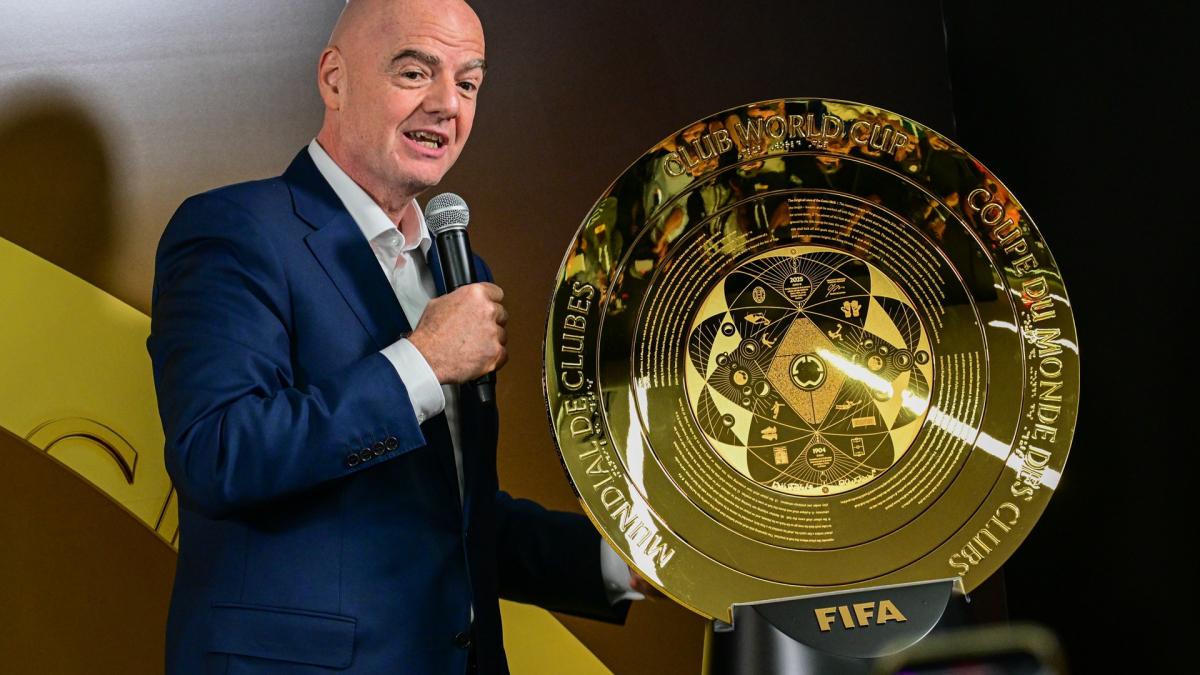
On June 11, 2025, Uzbekistan and Jordan validated their historic qualification for the 2026 World Cup, imitated by New Zealand in the Oceania area. At the same time, nations such as the United Arab Emirates, Iraq, Oman, Palestine and Indonesia continue their global dream, in a football landscape in full recomposition. The enlargement of the World Cup at 48 teams, often criticized in Europe and South America, nevertheless begins to produce its first concrete effects: entire regions finally access the global scene, long monopolized by the great traditional powers. This transformation is not limited to the only competition of national selections: tomorrow, the new World Cup of clubs, brought to 32 participants, will open on American soil. For the first time, African, Asian, South American, Oceanian or North American clubs will have the opportunity to exist on an equal footing, even symbolic, with European mastodons.
These two competitions, although independent, participate in the same movement: the redefinition of a more representative, more open, more in line with the reality of a sport that has become truly universal. Behind the figures of the two world tournaments – 48 nations, 32 clubs, 211 federations, 6 confederations -, these are social, cultural, geopolitical and economic issues that are played. Each new qualified nation, each emerging club that invites itself in the big leagues, testifies to a football which is no longer a center surrounded by outskirts, but a global archipelago where the lines of force move. This development is far from being a simple calendar or format reform: it marks the transition to an assumed globalization, sometimes disputed, but more and more essential of modern football.
Global football like a multipolar world
The 48 World Cup reflects a world in full mutation. The traditional domination of Western powers – on the political, economic and sporting level – is gradually questioned by a more horizontal globalization. Seeing Uzbekistan and Jordan qualify is to attend the symbolic assertion of regions long marginalized in the great stories of football. The overhaul of the World Cups responds to a geopolitical imperative: football can no longer remain centered on the South Europe-America axis, while Asia, Africa and the Pacific emerge at all levels. A World Cup at 48 and a 32 club World Cup reflect a desire to represent a more diverse planet, where the dynamics of football evolve outside the traditional capital of the game. Football becomes a lever of national affirmation, of soft power, of global image. When Uzbekistan and Jordan access the World Cup, or when Al Ahly, Auckland City, Wydad Casablanca or Ulsan Hyundai participate in a world club tournament, they are whole regions that find new visibility, in a world where influence is also measured on the sports field. Football is no longer the prerogative of Europe and South America. It becomes truly planetary. This also corresponds to a geopolitical logic where emerging countries want to project themselves on the international scene through sport.
As China invests massively in the Olympic Games, Central Asia, the Middle East, Africa or even certain Pacific nations see in the World Cup a soft power tool, a means of weighing in the global collective imagination. To refuse this opening is to stay in an implicit logic: that of a football reserved for historical elites. For the so -called “second circle” nations as for clubs outside the major European championships, these new formats are a gateway to the elite. Participating in a World Cup or a Club World Cup is structuring a federation, attracting sponsors, professionalizing staff, crediting projects. This acts as a development accelerator. On the club side, the repercussions are immediate: an African or Asian club that participates in the Club World Cup will increase its visibility, strengthen its attractiveness for players, trigger TV rights internationally. On the nations side, high -level experience stimulates young generations, opens the door to careers abroad and strengthens local competitiveness in the long term.
Narrative and emotional enrichment
These two extended competitions are also soft diplomacy laboratories. Where political institutions fail, football weaves links. When an Egyptian club, a South Korean club or a Japanese club plays against a European or American giant, this creates unexpected cultural bridges. Likewise, a selection of the Near East or Central Asia which faces England or France, it is a symbolic, peaceful, recognition and respect. These are also opportunities to enhance often overlooked collective identities. The Moroccan diaspora in Europe demonstrated it during the 2022 World Cup. Tomorrow, it may be the Indian, Vietnamese or Malagasy diaspora that will vibrate behind its colors. Football creates narrative, attachment, pride. These new formats are a scene of unique international expression. What makes the beauty of football is not only the winners, but the unexpected stories, the outsiders who upset the hierarchy. Iceland, Morocco, South Korea, but also clubs like Al Alhy or Espérance Tunis have offered legendary moments. By multiplying the participants, we multiply the chances of surprise, fairy tale, moments of raw emotion. Each new participant brings their own football, their game culture, their colors, its hymns, its songs, its legends. A 32 club World Cup allows the Mexican supporter to discover a South Korean club, the Brazilian fan to get attached to a Saudi club. We enrich the imagination of world football, we make it more alive, more plural, more human. What makes the magic of football has never been reduced to a record. These are the stories that remain. The tears of an unknown goalkeeper who describes his country for the first time, the jubilation of a people who sees his flag floating in a world stadium, the songs improvised in the streets of Djeddah, Amman or Tashkent, the dances of a small African club that stands up to a European legend.
By widening world cuts, we widen the range of collective emotions, improbable stories that become legendary, anonymous heroes that emerge from media to write their moment of eternity. Football has never been so powerful as when it overturns the established order, vibrates millions behind an outsider, gave birth to the unexpected in the powerful arena. It is not uniformity that creates intensity, but the unexpected, the diversity of styles, stories, dramas lived and overcome. A World Cup with Uzbekistan, Palestine or Indonesia is the emergence of a new imagination, it is the language, music, passion of another end of the world that enter our screens. It is a lesson in humility for large nations and an immense source of identification for diasporas. She is a little girl in Muscat or Baghdad who watches her country face the world champions and says to herself: me too, one day. It is a supporter in the West Bank or in the Tadjikes mountains that feels existing, recognized, represented. Each match becomes a mirror of identities, a story that exceeds 90 minutes. In the new club World Cup, it is also the story of a New Zealand club that meets the Bayern path, an Asian giant that can make a great Europe doubt, a local football that has never been seen on this scale. These emotions are stronger than UEFA coefficient calculations. They are raw, true, popular. They are the ones who nourish the global passion for the game. By opening the doors to more stories, more faces, more flags, football does not weaken: it is enriched, it becomes more human, more alive, more deeply universal.
An economic and structural windfall for emerging footballs
There are 211 FIFA member federations, and hundreds of professional clubs spread over all continents. It was absurd to continue with formats designed for football from the 1980s or 1990s, while sport has become a global phenomenon. Reformed world cuts are not inflation: it is a logical adaptation to the world as it is. In both cases – nations and clubs – old formats had become narrow, elitist, inequitable. By widening, we better respect geographic proportions, demographic dynamics, the reality of football practice. Football is now a world common good. It was time for his biggest competitions to reflect him. Sportingly, it is wrong to believe that more teams automatically means drop in level. The widening of the euro, the CAN or the Asian Cup has proven the opposite: the small teams progress when they face the big ones. It is by playing against the high level that we reach it. This truth applies to nations and clubs. An African or Asian club that faces Manchester City or Real Madrid in official competition returns. Likewise, a nation like Jordan or Uzbekistan, which participates in the World Cup, acquires an irreplaceable experience, which benefits its entire football sector. Ultimately, this reduces gaps, strengthens competition, and makes world football more open and more unpredictable. The redistribution of wealth is another pillar. New World Cups generate more television rights, commercial income and partnerships. This allows FIFA to invest more in member federations, especially the most fragile.
By increasing the number of participants, access to resources that can radically transform the local ecosystem. For clubs from Latin America, Caribbean or Africa, these income is essential to survive in the European giants. For emerging nations, these are years of public budget injected in a few weeks. Stadiums, infrastructure, training, visibility: the economic processing power of world football finally extends on a planetary scale. The World Cup at 48 teams and the 32 club World Cup are not gadget reforms. They are the symptoms of a rocking world, where the lines move, the balances reinvent themselves, and where football is no longer the privilege of a few historical powers. They are a choice of openness, redistribution, pluralism, in a sport that has never been so global. Rather than fear, you have to see a unique opportunity: that of building a fairer, more exciting, more diverse world football. Provided, of course, that the stake remains the game. And that behind formats, sporting, cultural and social issues remain at the heart of the project. The globalization of football is just beginning. As much as it is inclusive and ambitious. What the Conservatives consider to be a “dilution” is in reality a refoundation of the social football social contract. The most universal sport must reflect the human diversity it embodies. A World Cup at 48 is not a threat, but a promise: that of a more open, fairer world, richer in its identities and stories. And if it is necessary to go through a few unbalanced games, some unknown nations, it is a reasonable price to pay to build a truly global football.
Pub. the
– Maj the



